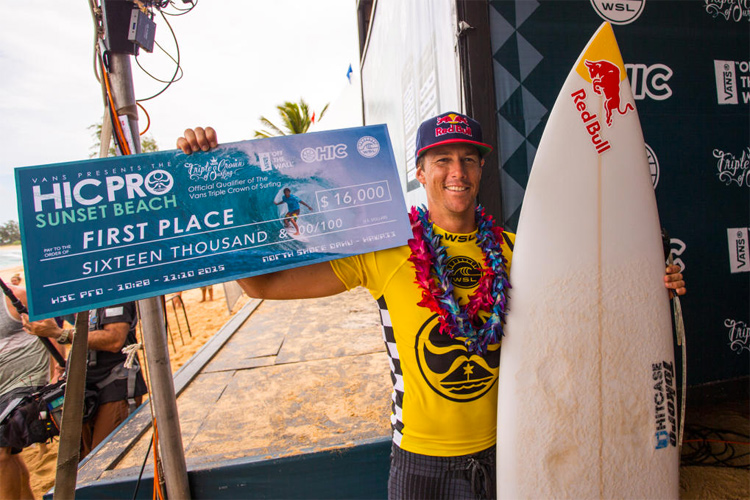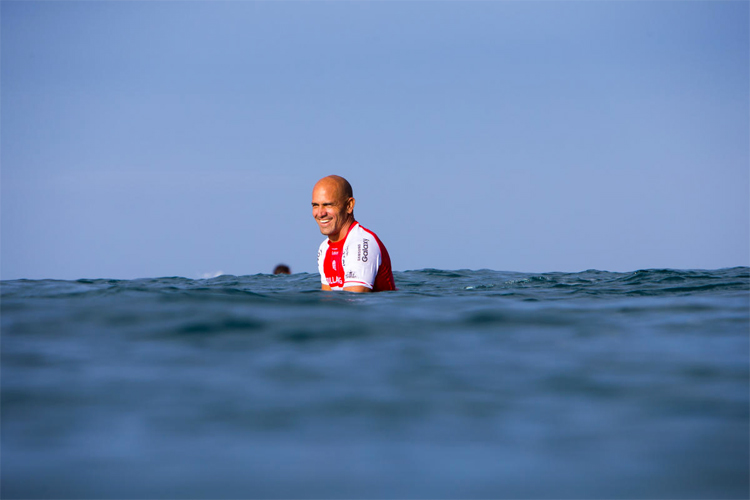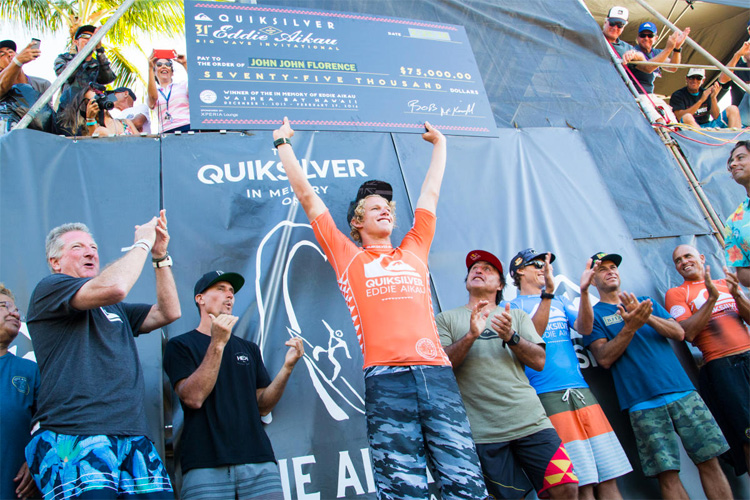How do professional surfers make money? How much do they earn a year? Can a pro surfer make a living off competition?
Pro surfing is a relatively new thing. You can only talk of professional surfing careers when the ASP World Tour began its operations in the early 1980s.
Believe it or not, today, there are not more than 1,500-2,000 professional competitive male and female surfers in the world.
And probably only less than 100 athletes will make a living off it.
The monthly salary or annual income of a professional surfer varies depending on whether he or she is competing at an elite level or still struggling to reach the top of the qualifying series rankings.
Do surfers make a lot of money? Only a few will become rich, and only a handful will become millionaires. Let's understand why.
The Championship Tour (CT) Earnings
The Championship Tour is the elite of surfing and features 34 professional athletes. The winner of each of the 11 CT events takes home $100,000.
Between 2010 and 2019, only 26 male surfers concluded the season in the top 10.
Kelly Slater and Jordy Smith were the most regular surfers of the decade. They only missed the top 10 twice.
However, it was Gabriel Medina who made more from prize money during these ten seasons. The Brazilian took home more than $2.4 million.
Slater, the second most well-paid of the decade, made $2.2 million from contest earnings.
Above these top 10 references, Medina and Slater were the only surfers to reach the $2 million mark, and only eight pro surfers cashed in more than $1 million.
Adrian Buchan only made it to the top 10 once, in 2010, and in that year, he pocketed $100,000.
So, there's a huge earning gap between the top and the lowest-ranked CT surfers.

The Qualifying Series (QS) Earnings
Every year, professional surfing's second division features between 750 and 1300 competitors from all over the world.
Their goal is to gather enough points to make it into the top 10 of the rankings by the end of the year and qualify for the CT.
This means that only around 1 percent of all QS athletes will have the chance to reach the surfing elite.
The QS is a long and strenuous marathon of traveling, ups and downs, emotional rollercoasters, and disappointment. For 99 percent of all QS surfers, it can be extremely frustrating.
The truth is that you'll hardly make a living from it.
Why? Because the average annual income of the number one QS surfer in the world is around $65,000.
The winner of each of the QS 10,000 events gets $30,000 in prize money. And there is only a handful of these premium contests each season.
Now, subtract expensive flights from one corner of the globe to another, accommodation bills, food costs, equipment, and entrance fees, and you'll end up with nearly nothing for yourself.
Between 2010 and 2019, there was only one QS champion making more than $100,000. It was Filipe Toledo. The Brazilian made $160,800 after winning the 2014 US Open of Surfing.

The Extra Extras
Fortunately, a pro surfer could benefit from several sources of income. There's more to the life of a competitive wave rider than just winning and losing heats.
Some of these high-performance athletes have become personal brands with a massive influence across several potential consumer markets.
The average income of a pro surfer can be broken down into several pieces:
1. Prize Money
For the majority, it's the only source of earnings. For many, it is the primary source of income, and for a restricted group of stars, it's the least important slice of the pie.
2. Sponsorship
It's not easy to find long-term sponsors, but they could be relevant to balance a surfer's financial life. Sponsorship deals may, for example, cover traveling expenses and hotel bills.
3. Occasional Paid Endorsements
If you're a successful surfer with relevant social media exposure, you are eligible for exciting marketing deals with surf or non-surf-related multinational companies and brands.
4. Equipment
Surfboards, wetsuits, and surf gear can be expensive. If you've got the backup of a few surf gear manufacturers, you could save a few thousand dollars in premium equipment for your competitive needs.
5. YouTube Earnings
The world is changing, and digital projects are shaping the lives of many surfers.
Surfers who have been building a video platform are already monetizing their content quite well. The outcome can be surprising and easily surpass an average result in a QS event.

2010-2019 Championship Tour Seasons | Earnings In The Top 10 Rankings
1. Gabriel Medina: $2,401,650
2. Kelly Slater: $2,240,250
3. Jordy Smith: $1,838,650
4. Julian Wilson: $1,607,250
5. John John Florence: $1,582,250
6. Owen Wright: $1,557,000
7. Filipe Toledo: $1,551,950
8. Mick Fanning: $1,433,750
9. Adriano de Souza: $1,253,250
10. Joel Parkinson: $1,226,000
11. Taj Burrow: $964,500
12. Italo Ferreira: $960,600
13. Michel Bourez: $846,450
14. Kolohe Andino: $667,000
15. Jeremy Flores: $622,600
16. Matt Wilkinson: $603,000
17. Josh Kerr: $575,250
18. Kanoa Igarashi: $418,000
19. Nat Young: $288,500
20. Wade Carmichael: $221,400
21. Kai Otton: $184,500
22. Conner Coffin: $170,900
23. Alejo Muniz: $154,750
24. Bede Durbidge: $122,500
25. Dane Reynolds: $114,750
26. Adrian Buchan: $100,000
